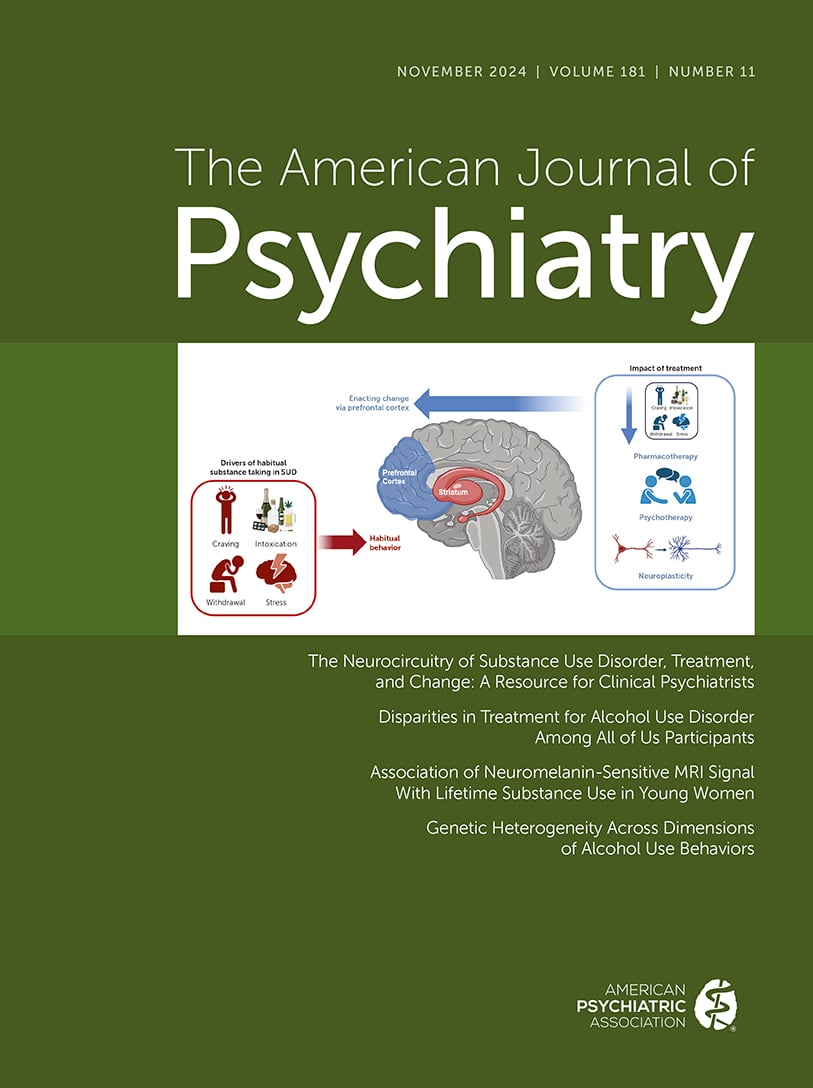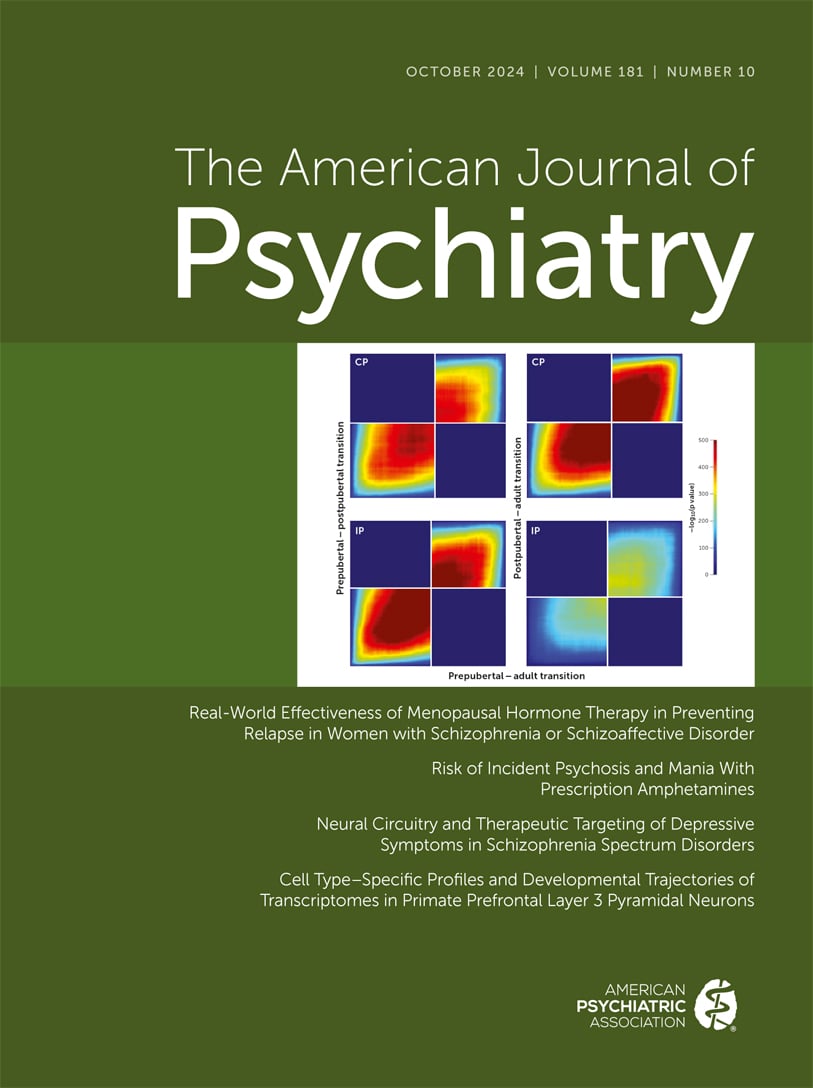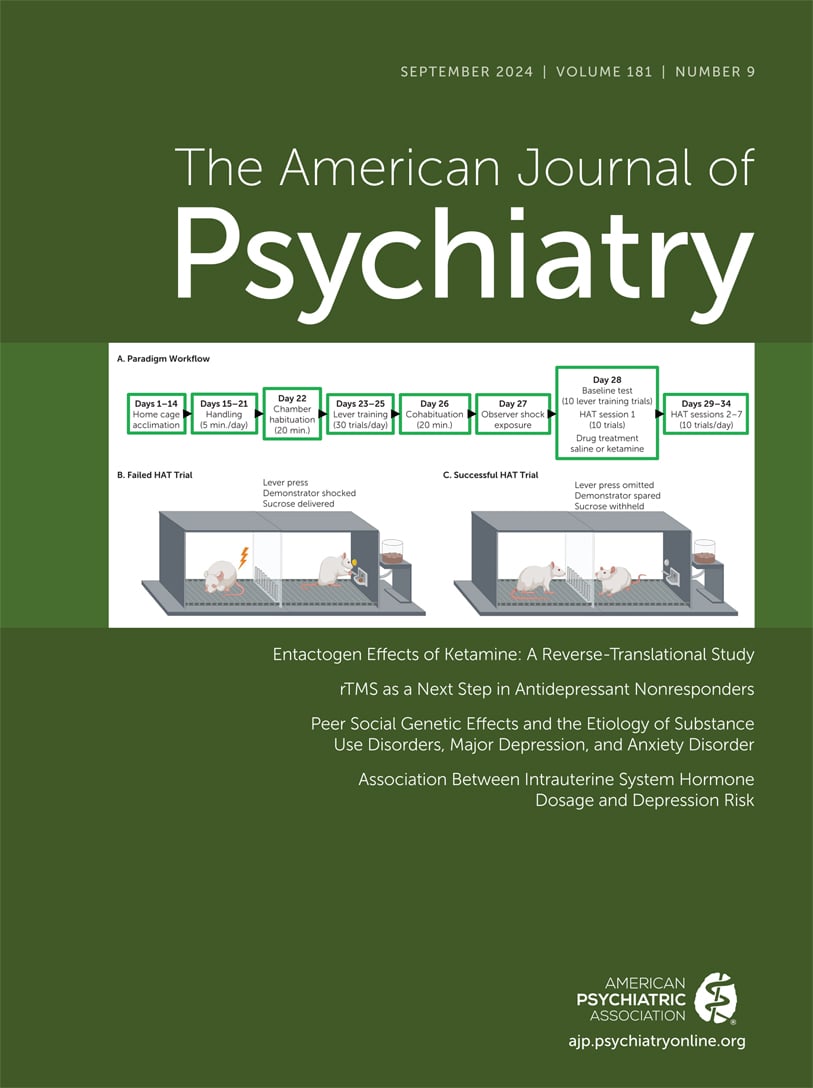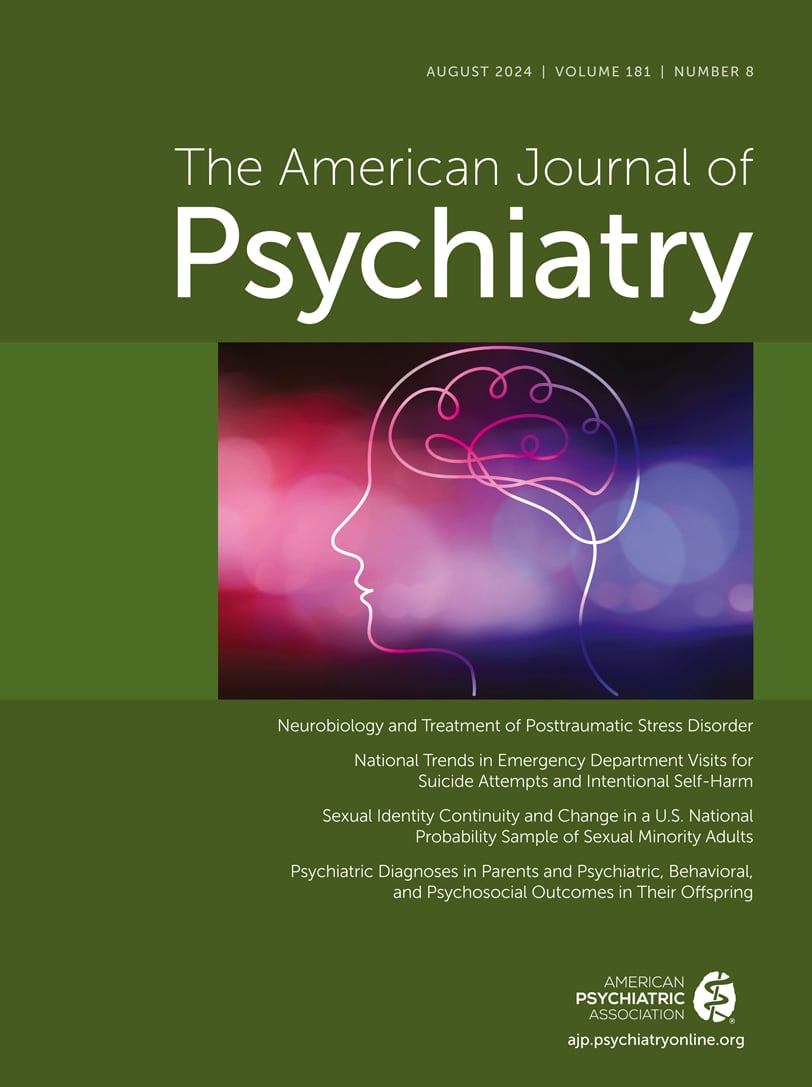American Journal of Psychiatry
- Volume 174
- Number 1
- January 2017
Editorials
Clinical Case Conference
Images in Psychiatry
Reviews and Overviews
Publication date: 09 September 2016
Pages18–25Objective: Insomnia is associated with increased risk for suicide. The Food and Drug Administration (FDA) has mandated that warnings regarding suicide be included in the prescribing information for hypnotic medications. The authors conducted a review of ...
https://doi.org/10.1176/appi.ajp.2016.16030336Articles
Publication date: 18 November 2016
Pages26–35Objective: Two hypotheses, gaze aversion and gaze indifference, are commonly cited to explain a diagnostic hallmark of autism: reduced attention to others’ eyes. The two posit different areas of atypical brain function, different pathogenic models of ...
https://doi.org/10.1176/appi.ajp.2016.15091222Publication date: 15 September 2016
Pages36–41Objective: The norepinephrine transporter has been suggested to play a crucial role in major depressive disorder. However, norepinephrine transporter availability in major depressive disorder and its role with clinical symptoms are not known. The authors ...
https://doi.org/10.1176/appi.ajp.2016.15101334Publication date: 13 August 2016
Pages42–50Objective: Treatment-refractory depression is a devastating condition with significant morbidity, mortality, and societal cost. At least 15% of cases of major depressive disorder remain refractory to treatment. The authors previously identified a young ...
https://doi.org/10.1176/appi.ajp.2016.15111500Publication date: 13 August 2016
Pages51–59Objective: Despite evidence for the validity of premenstrual dysphoric disorder (PMDD) and the inclusion of the disorder in DSM-5, variable diagnostic practices compromise the construct validity of the diagnosis and threaten the clarity of efforts to ...
https://doi.org/10.1176/appi.ajp.2016.15121510Publication date: 09 September 2016
Pages60–69Objective: Structural brain imaging studies in obsessive-compulsive disorder (OCD) have produced inconsistent findings. This may be partially due to limited statistical power from relatively small samples and clinical heterogeneity related to variation in ...
https://doi.org/10.1176/appi.ajp.2016.16020201Publication date: 13 August 2016
Pages70–76Objective: DSM-5 describes “a distinct period of abnormally and persistently elevated, expansive, or irritable mood and abnormally and persistently increased activity or energy” as a primary criterion for mania. Thus, increased energy or activity is now ...
https://doi.org/10.1176/appi.ajp.2016.15091132Letters to the Editor
Correction
Official Actions
Past Issues
View Issues Archive
Vol. 181 | No. 11

Vol. 181 | No. 10

Vol. 181 | No. 9
